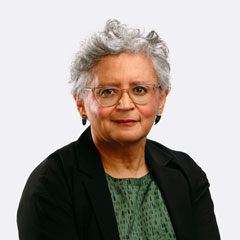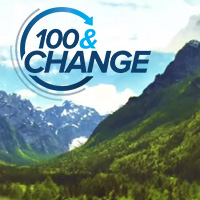I have spoken to and heard from many people about our 100&Change competition in one-on-one conversations, at conferences, and in media interviews, and a few misconceptions seem to arise frequently. I want to address them directly.

The first misconception is that the MacArthur Foundation is abandoning its other grantmaking activities in favor of the 100&Change competition. This could not be further from the truth. 100&Change is one program in a MacArthur Foundation portfolio that includes Big Bets, time limited efforts to achieve transformative change in specific areas of profound concern; Enduring Commitments, areas of work with longstanding and deep engagement; and The MacArthur Fellows Program. The Foundation’s Big Bets include work on over-incarceration, global climate change, nuclear risk, and significantly increasing financial capital for the social sector. Its Enduring Commitments are the role of journalism in a responsible and responsive democracy, as well as the strength and vitality of our headquarters city, Chicago.

A second misconception, closely related to the first, is that the Board of Director’s choice of the eight semi-finalists is a harbinger of the future direction of the Foundation’s work. Some have asked if the Foundation is shifting its portfolio to focus on child development, neglected tropical diseases, healthcare delivery, agriculture, and digital archives? The answer is no. Although we were open to submissions that aligned with our Big Bets and Enduring Commitments, the projects of the eight semi-finalists do not fit within the Foundation’s existing programs and we do not anticipate adapting our current work to take in the eight semi-finalists or even the final project selected for the $100 million grant.

The third misconception is that, despite our declaration of openness, we had a hidden agenda – a secret list of categories of problems and solutions that would be preferred over others. We did not. We were excited by the diversity of problems and solutions submitted to 100&Change. By our rough estimates, 26 percent of the initial submissions could be classified into the broad category of health and well-being and 21 percent, education and economic opportunity. The others were dispersed across many fields including sustainable cities, communities and regions (7 percent), resilience against climate change (6 percent), and food security (5 percent).
The distribution of the 801 proposals forwarded to the judges was similar: 30 percent were health and well-being and 20 percent were education and economic opportunity, with others dispersed across many other fields. Finally, the eight semi-finalists reflect the openness of the competition:
- Diverse issues from health to education to technology;
- Diverse places from Africa to Asia to the Middle East to the United States; and
- Diverse populations served from addressing the needs of newborns to children to adults.
Four of the eight semi-finalists fall under the broad category of health and well-being, but the topics range from newborn health to a neglected tropical disease, from vision care to access to specialty care for underserved populations in the United States. The other projects address food security and nutrition, information access, children in orphanages, and the education of refugee children. The work occurs in diverse places – Nigeria, Ethiopia, and Ghana, Nepal, Jordan and the United States – and the projects serve diverse populations, from newborns to adults.
We realize we do not have all the answers. That is why we looked well beyond the expertise of our staff and welcomed proposals from anywhere on any topic. This diversity of projects could only have emerged from a truly open selection process.




